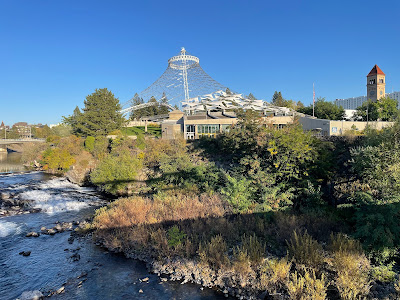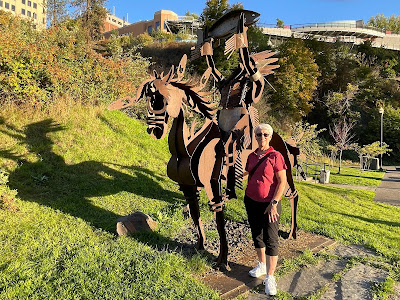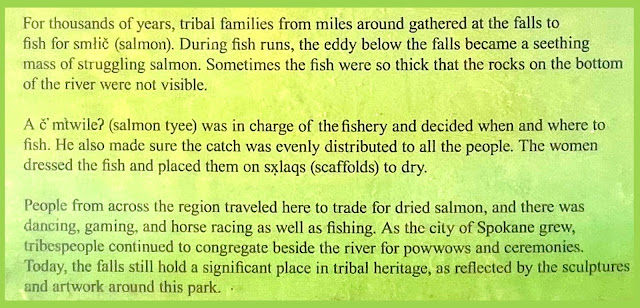Since today was a shorter travel day and we could not check into the Spokane KOA Journey until 2 PM, we did not get on the road until about 10:30 AM Mountain Daylight Time.
An anomaly in our morning occurred when starting the Lincoln MKX to put it in Neutral Tow Mode. The check engine light came on. Of course, the alert could be caused by many things. Not being sure what the light was about, Martha did some reading. It became apparent that the first step was to check the fluid levels. Well, forget that. Engines are so tightly tucked under the hood that access to a dipstick is nearly impossible. This is not the 1960s when it was more simple. We had the oil changed and new rear brakes installed before leaving the Louisville area so decided to just have the transmission fluid changed upon arrival in Spokane.
Since we had crossed the Continental Divide on Thursday and we were still at 3500 feet elevation, we knew we would not be climbing in elevation very much today. We would, however, descend 2000 feet into Cour d’Alene, Idaho, and the Spokane Valley just across the panhandle. I can truly say, I was very grateful for good air brakes and a functioning engine brake on the motor home as we descended the mountain.
For those interested, diesel-fired rigs have air brakes. That means that air pressure is used to keep the service brakes from engaging. It is a safety feature, too. An over-the-road diesel engine also has what is called an engine brake; sometimes called an exhaust brake. The service brakes and the engine brake help in slowing down something the weight of a 22,000 lb. motorhome. We also have proportional braking control in our tow vehicle. As the brakes are engaged in the cab, the brakes are applied in the SUV. Still, braking a large unit isn’t like applying the brakes on an automobile which has less inertia. Speed becomes an enemy when going down a steep grade so having the engine brake slow the RPMs and the service brakes to slow the rotation of the tires all works to accomplish the desired task; that of reaching the bottom of the grade safely.
After arriving at the KOA we took off for the local Valvoline location and had the transmission fluid changed. We now feel much better about the situation on towing our car "all four down."
After the Valvoline visit, we had time to walk around the Spokane Riverfront for a late afternoon visit. The weather was nice with the temperature just right and the sun shining brightly. After having an early dinner at a restaurant called Kasa Taphouse, we walked around the park area where Expo ’74 had been staged.





No comments:
Post a Comment